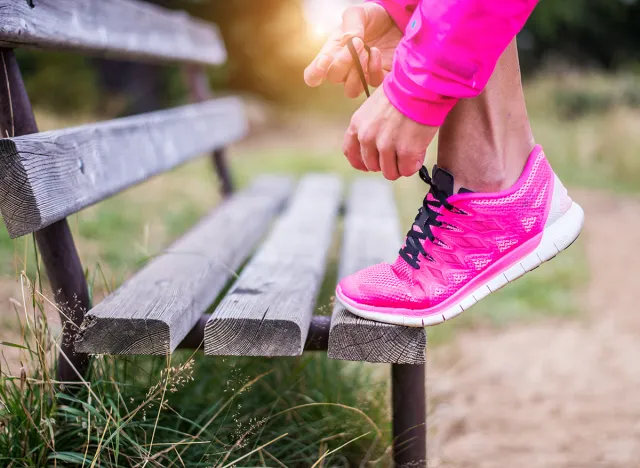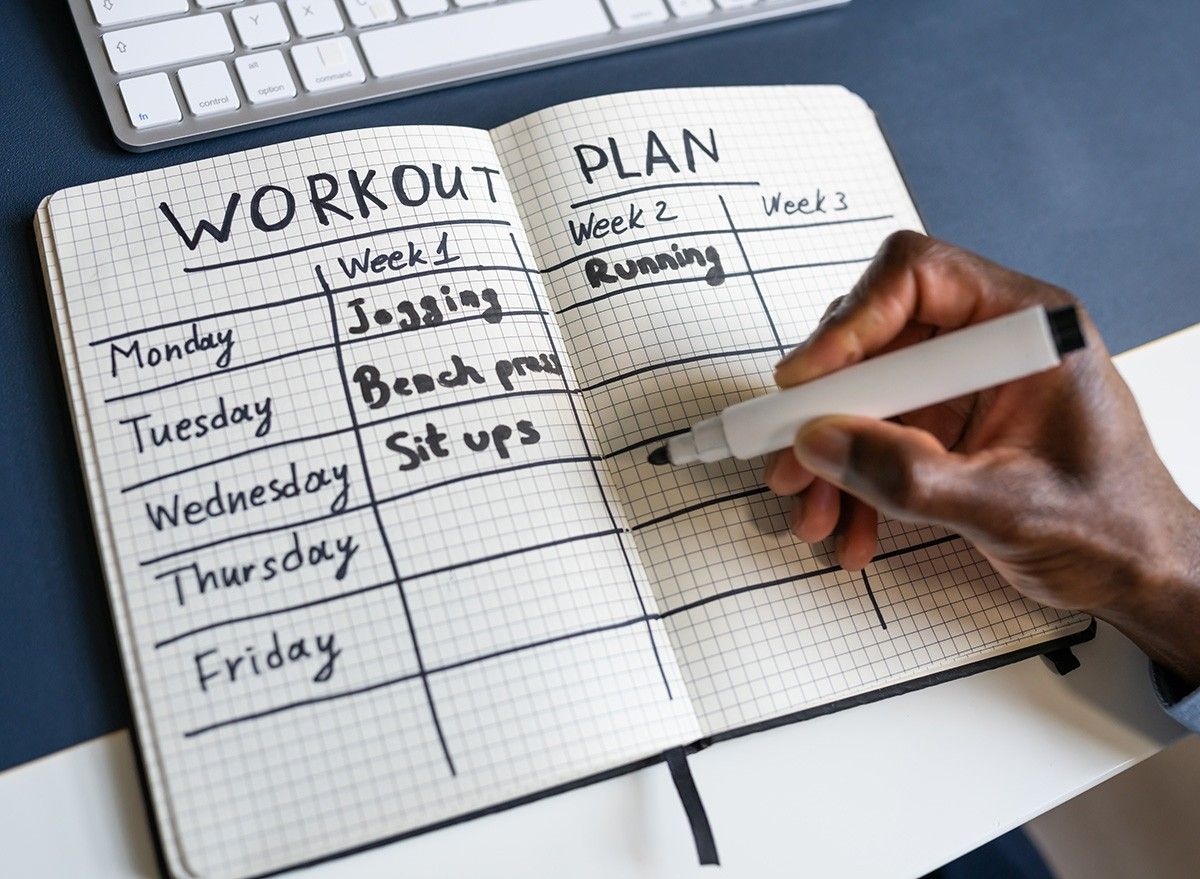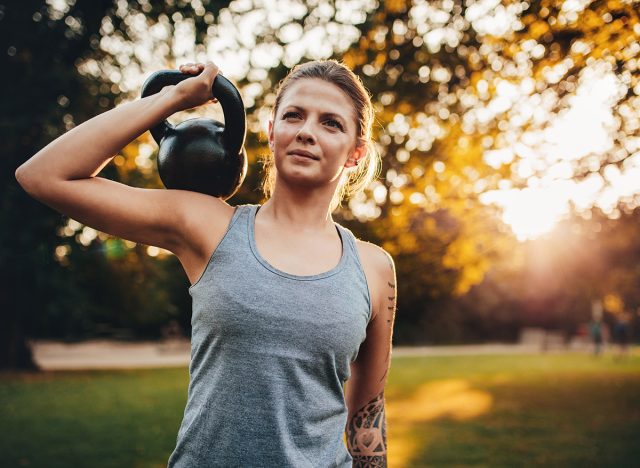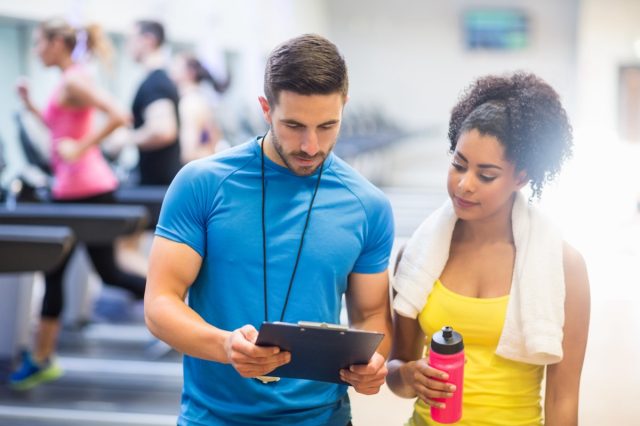13 Steps to Sustainable Fat Loss

After years of coaching clients and navigating my own fitness journey, I've stumbled upon a few truths. While there are some basic principles to follow, the real magic happens when you approach your goals with the curiosity and openness of a kid in a candy store. Here are key secrets to sustainable fat loss.
Figure Out Why Past Attempts Didn't Work

Take a look back at your past attempts. Jot down what worked, what didn't, and why. "One of the most common pitfalls is overestimating your fitness level, which often leads to pushing yourself too hard, too soon," says the NIFS. "You might expect immediate results and attempt exercises that your body isn't ready for, causing discouragement and soreness. Solution: The key is to start where you are now. Don't rush into intense workouts. Understand that it takes time to see significant results. Begin with a routine that's manageable for your current fitness level. Try working out for 30 minutes, three times a week, and gradually increase intensity as your body adapts. Remember, some soreness is normal, but don't let it discourage you."
Focus on How You Feel, Not How You Look

Shift your focus from how you look to how you feel. Start tracking your mood because, believe it or not, it's a game-changer
Celebrate Non-Number Victories

Forget the scale for a second and celebrate victories that don't involve numbers. Clearer skin, extra energy, you name it. Start small with one achievable goal, whether it's slowing down your eating or getting more movement in your day.
Change Your Relationship with Food

Slow down, savor each bite, and really taste it. Don't snack on your feet or while driving. "Remember how good your first taste of ice cream is each summer? Mindful eating can give you that positive feeling year-round — and, as an added bonus, you can achieve satisfaction through smaller portions," says the Cleveland Clinic.
Find Fun Workouts

Find workouts that feel like playtime. "Exercise can help prevent excess weight gain or help you keep off lost weight. When you take part in physical activity, you burn calories. The more intense the activity, the more calories you burn," says the Mayo Clinic. "Regular trips to the gym are great, but don't worry if you can't find a large chunk of time to exercise every day. Any amount of activity is better than none. To gain the benefits of exercise, just get more active throughout your day. For example, take the stairs instead of the elevator or rev up your household chores. Consistency is key."
Exercise Outdoors

On that note, exercise outside when possible. "Many people feel a lot of tension about working out, losing weight and lowering their blood pressure," she explains. "Outdoor exercise is enjoyable and feels more like play than a chore," ShaNay Norvell, a certified fitness instructor who leads classes at Cancer Wellness, tells Piedmont Health. And…
Try Morning Workouts

Studies have shown that for many people (though not 100%), morning workouts can contribute to fat loss more than the same workout performed in the afternoon.
RELATED: This Is Exactly How to Lose Body Fat This Year
Get More Sleep

Sleep is crucial, folks. Like, seriously crucial. So prioritize it like a tired toddler. "Without enough sleep, people tend to overeat and choose unhealthy foods. Sleep deprivation affects the body's release of ghrelin and leptin, two neurotransmitters that tell the brain when to consume calories. People who are sleep deprived are more drawn toward high-calorie foods. Chronic sleep loss has been linked to having a larger waist circumference, and an increased risk of obesity," says the Sleep Foundation.
Schedule Your Workouts

Schedule your workouts. Sign up for a class in advance, plan to meet someone, or just write it on your calendar.
Continue Making Small Changes

Change is part of the game. Avoid plateaus by planning small changes to your routine in advance. "To begin, walk just 10 minutes a day. You can wake up 10 minutes early and begin your day with a walk, or do it during your lunch break for a midday jolt, or grab a family member after dinner for an evening stroll. Eventually, you can do all three, and you'll have your 30 minutes of moderate daily exercise," says UT Southwestern.
Consult with an Expert

Look to an expert for how, but ultimately you want to take care of your body by training cardio, strength, and mobility. Add some kettlebells with your yoga or bicep curls.
Track Your Progress

Track your progress, however small. "Benefits of regularly tracking your fitness journey can include keeping your goals in sight and your accomplishments in perspective. It also helps you to become more mindful of why you are taking on regular exercise," writes Lauren Kelsheimer in NIFS for Fitness.
RELATED: Andrea Simulus Flaunts 6-Pack and Reveals 5 Reasons Why You Don't Have One Yet
Set a Goal

Start with a goal, and make one right now. "Set small, attainable goals. Strive to reach each goal one at a time, so you are not overwhelmed, and you can keep yourself motivated!" Kali Aloia, Registered Dietitian, tells the Washington Health System.




